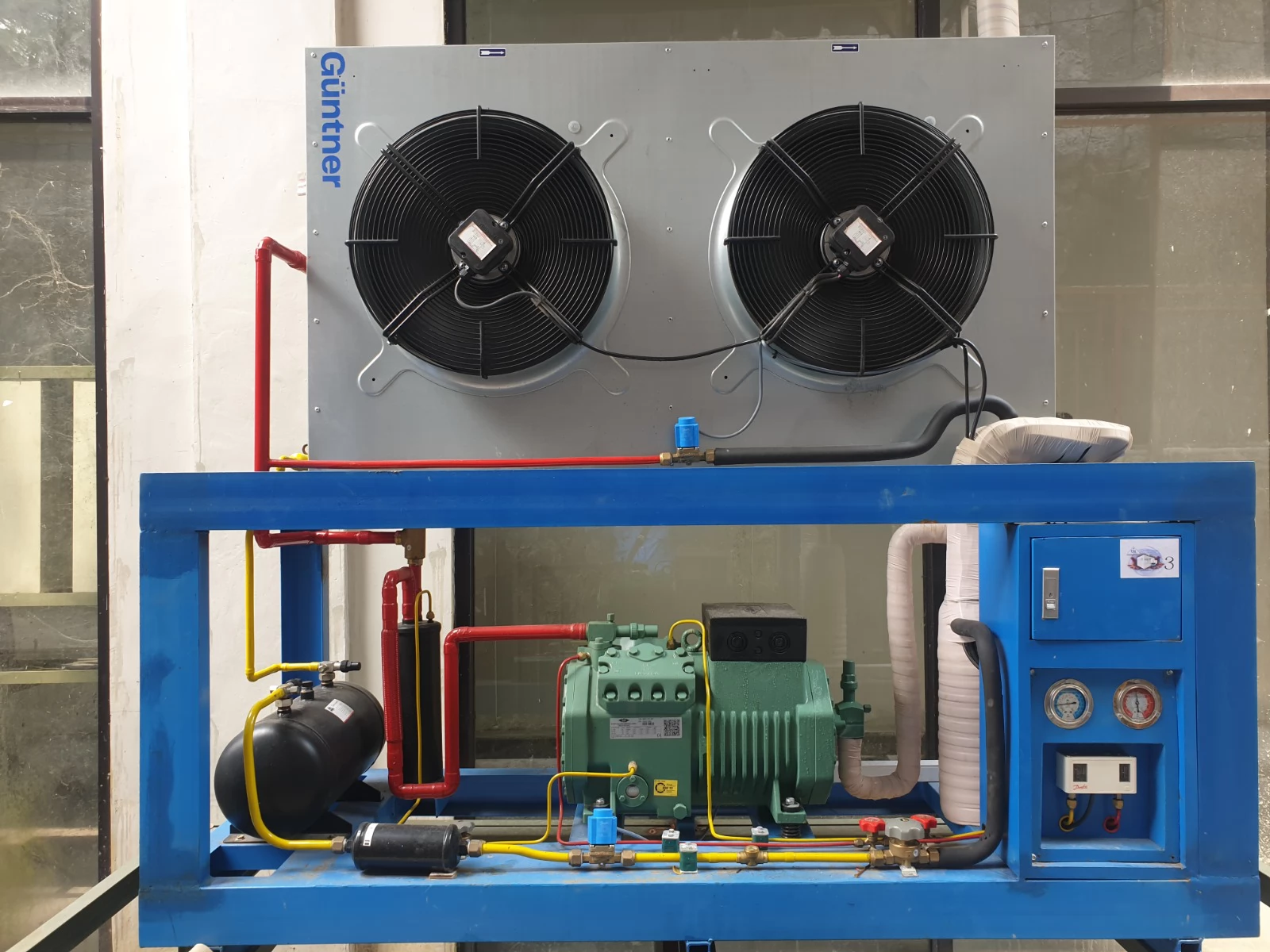
Mengoptimalkan Kualitas dan Keamanan Ikan dengan Cold Storage Freezer: Panduan Lengkap
Dalam industri perikanan, menjaga kualitas ikan dari saat ditangkap hingga sampai ke konsumen adalah hal yang sangat penting. Salah satu teknologi kunci yang digunakan untuk mencapai hal ini adalah cold storage freezer. Dalam artikel ini, kita akan membahas secara mendalam tentang peran penting cold storage freezer dalam menjaga kesegaran dan keamanan ikan, serta faktor-faktor yang perlu dipertimbangkan dalam memilih dan mengoperasikan cold storage freezer untuk tujuan ini.
1. Pentingnya Cold Storage Freezer untuk Ikan
Cold storage freezer adalah fasilitas penyimpanan yang dirancang khusus untuk menjaga ikan tetap beku pada suhu yang rendah untuk menghambat pertumbuhan bakteri dan memperpanjang umur simpan ikan. Dengan menerapkan teknologi ini, produsen ikan dapat memastikan bahwa produk mereka tetap segar dan aman untuk dikonsumsi bahkan setelah melewati proses distribusi yang panjang.
2. Faktor-faktor yang Perlu Dipertimbangkan dalam Memilih Cold Storage Freezer
a. Kapasitas: Kapasitas cold storage freezer harus sesuai dengan volume produksi ikan. Hal ini penting agar tidak terjadi overloading yang dapat mempengaruhi kualitas ikan.
b. Suhu: Cold storage freezer harus mampu menjaga suhu dalam kisaran yang aman untuk penyimpanan ikan, biasanya antara -18°C hingga -25°C tergantung pada jenis ikan.
c. Sistem Pemantauan dan Kontrol: Cold storage freezer harus dilengkapi dengan sistem pemantauan dan kontrol suhu yang akurat untuk memastikan kondisi penyimpanan yang optimal.
d. Kualitas Isolasi: Kualitas isolasi dari cold storage freezer sangat penting untuk mencegah terjadinya perubahan suhu yang tidak diinginkan dan mengurangi konsumsi energi.
e. Keamanan: Cold storage freezer harus dilengkapi dengan sistem keamanan yang memadai untuk mencegah akses tidak sah dan kehilangan ikan yang disimpan.
3. Manfaat Cold Storage Freezer untuk Ikan
a. Memperpanjang Umur Simpan: Dengan menjaga suhu rendah secara konsisten, cold storage freezer dapat memperpanjang umur simpan ikan, memungkinkan produsen untuk menyimpan stok lebih lama tanpa khawatir tentang kehilangan kualitas.
b. Pemeliharaan Kualitas: Cold storage freezer membantu menjaga kualitas ikan dengan mencegah pertumbuhan bakteri dan kerusakan selama penyimpanan, sehingga menghasilkan produk akhir yang lebih segar dan berkualitas.
c. Efisiensi Operasional: Dengan menggunakan cold storage freezer yang efisien, produsen dapat mengurangi biaya operasional dan meningkatkan produktivitas dengan mengoptimalkan penggunaan ruang penyimpanan dan mengurangi kebutuhan untuk pembekuan ulang.
4. Kesimpulan
Cold storage freezer adalah teknologi yang sangat penting dalam industri perikanan untuk menjaga kualitas dan keamanan ikan selama penyimpanan dan distribusi. Dengan memilih dan mengoperasikan cold storage freezer yang tepat, produsen ikan dapat memastikan bahwa produk mereka tetap segar dan berkualitas tinggi dari gudang penyimpanan hingga meja konsumen. Dengan demikian, cold storage freezer merupakan investasi yang sangat berharga bagi produsen ikan yang peduli terhadap kualitas produk mereka dan kepuasan pelanggan.
In the realm of fish preservation, both public and private cold-storage facilities play crucial roles. In bustling fishing ports like Gloucester, Boston, and Seattle, where the daily influx of fish is substantial, numerous public cold-storage plants are equipped to handle such volumes efficiently. However, in smaller seaports where fish supplies are infrequent and limited, the expense of maintaining large public cold-storage plants isn't justified. Consequently, many fish producers in these smaller ports must maintain their own freezing and storage facilities to meet their needs.
The diverse array of fishery products derived from the various species found in oceans, lakes, and rivers necessitates varying handling, freezing, and cold-storage techniques. For instance, larger fish such as salmon, tuna, and halibut are typically frozen and stored whole (in-the-round), with periodic glazing to maintain freshness. Conversely, smaller fish like cod and haddock are often filleted, packaged, frozen, and stored in cardboard cartons.
These differences in handling, freezing, and storing various fishery products, coupled with the additional labor required for freezing and glazing round fish, lead to some reluctance on the part of public cold-storage operators to handle certain types of fishery products. Moreover, the preference for not storing unpackaged fish alongside other frozen materials further complicates matters. As a result, individual fish producers find it almost necessary to have their own freezing and cold-storage facilities, albeit on a limited scale.
When it comes to setting up or modifying cold-storage facilities, meticulous planning and collaboration among company personnel, construction and refrigeration engineers, as well as local health and building inspectors, are essential. While comprehensive specifications for a specific installation require such collaborative efforts, several key factors should be considered:
-
Plant Location:
- The site chosen for the cold-storage facility should be strategically located to facilitate efficient transportation of fish products and minimize logistical challenges.
- Accessibility to transportation hubs, such as ports or major roads, is crucial for seamless distribution of frozen fish.
-
Design and Construction:
- The design and layout of the cold-storage facility should optimize space utilization and workflow efficiency.
- Adequate insulation and temperature control mechanisms must be incorporated to maintain desired storage temperatures and prevent fluctuations.
-
Product Environment:
- Different types of fish products may require distinct storage conditions. Factors such as temperature, humidity, and airflow should be tailored to the specific needs of each product.
- Segregation of different fish products to prevent cross-contamination and maintain quality is imperative.
In addition to these factors, calculating refrigeration requirements is paramount in ensuring optimal performance of the cold-storage facility. Accurate estimation of cooling loads based on factors such as ambient temperature, product volume, and heat gain from equipment is essential for selecting appropriate refrigeration systems and avoiding over- or under-sizing.
In summary, the establishment and operation of cold-storage facilities for fish preservation involve careful consideration of various factors ranging from location and design to product-specific storage requirements. By addressing these considerations comprehensively, fish producers can effectively preserve the quality and freshness of their products, regardless of the scale of their operations or the challenges posed by their geographical location.